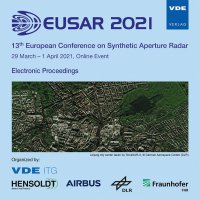Sub-aperture recombination for sliding window SAS processing in 3D down-looking synthetic aperture sonar
Conference: EUSAR 2021 - 13th European Conference on Synthetic Aperture Radar
03/29/2021 - 04/01/2021 at online
Proceedings: EUSAR 2021
Pages: 6Language: englishTyp: PDF
Authors:
Marston, Timothy M.; Williams, Kevin L. (APL-UW, USA)
Plotnick, Daniel S. (ARL-PSU, USA)
Abstract:
Low frequency downward looking synthetic aperture sonar systems are used to create high resolution volumetric images within the sediment to identify buried objects such as unexploded ordnance (UXO), mines, pipelines, and cables. Many of these systems are towed and have a direct datalink to operators on the surface. Providing real-time feedback to operators can affect decisions such as sonar placement, track orientation, and whether or not a target has been sufficiently imaged. It has previously been demonstrated that fast factorized back-projection (FFBP) is readily adaptable to the volumetric imaging case relevant for sub-sediment synthetic aperture systems and can greatly accelerate the beamforming process. The 3D FFBP algorithm also generates secondary data products that have potential value to operators, such as high-resolution spherical coordinate sub-aperture images. Maximum intensity projections (MIP’s) through these spherical coordinate images can be used to create acoustic snapshots of the sediment volume beneath the sonar. The sub-apertures generated during application of the 3D FFBP algorithm do not overlap, however, and anisotropic scattering from targets can make MIP images from adjacent sub-apertures appear disjoint, causing difficulties when tracking targets traversing the sonar’s field of view. To facilitate tracking anisotropic targets through multiple sub-aperture frames a modification to the 3D FFBP algorithm is presented that allows spherical-coordinate sub-apertures to be shifted with overlap, while circumventing the computational penalty associated with re-processing entire sub-apertures.


